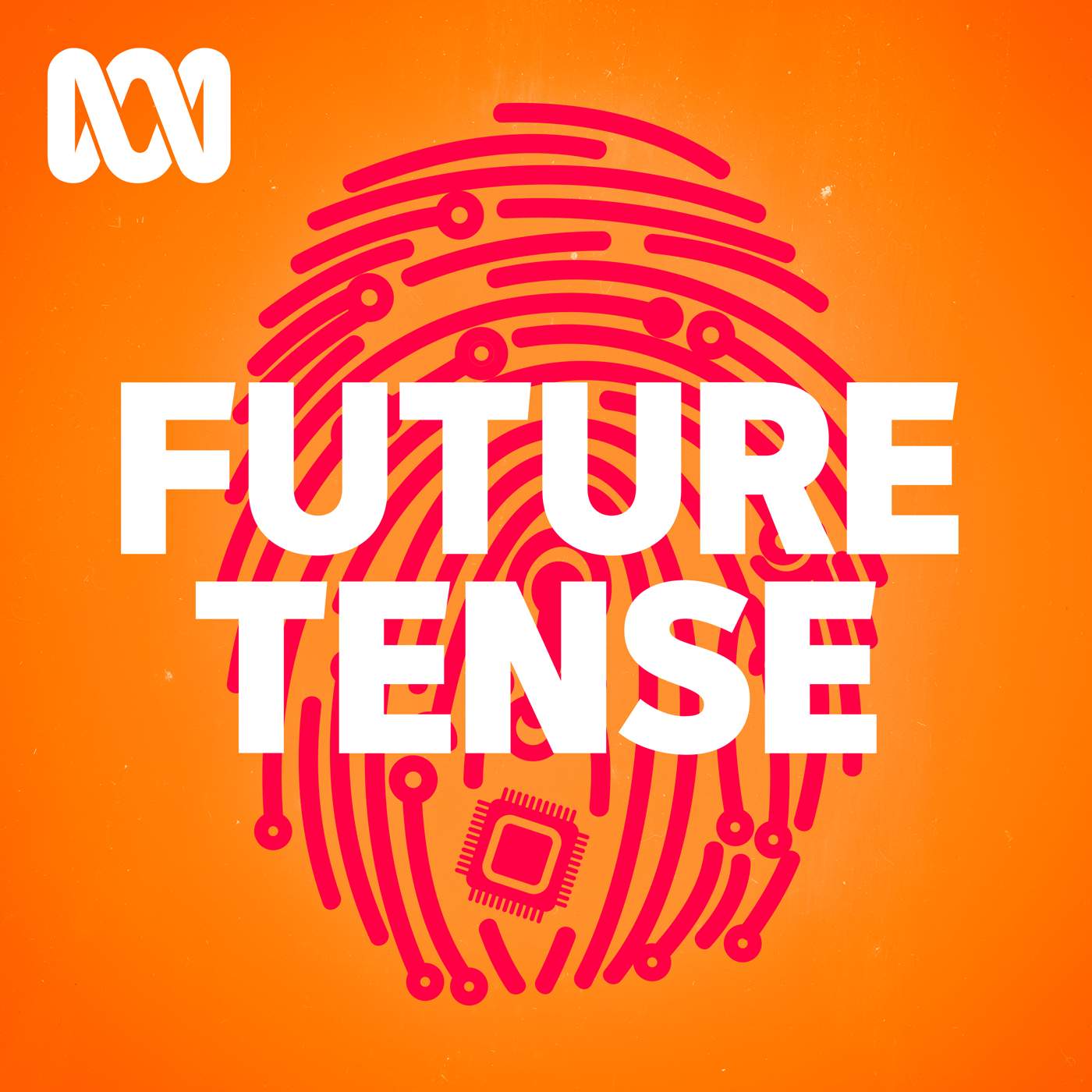
Heliox: Where Evidence Meets Empathy 🇨🇦
Join our hosts as they break down complex data into understandable insights, providing you with the knowledge to navigate our rapidly changing world. Tune in for a thoughtful, evidence-based discussion that bridges expert analysis with real-world implications, an SCZoomers Podcast
Independent, moderated, timely, deep, gentle, clinical, global, and community conversations about things that matter. Breathe Easy, we go deep and lightly surface the big ideas.
Curated, independent, moderated, timely, deep, gentle, evidenced-based, clinical & community information regarding COVID-19. Since 2017, it has focused on Covid since Feb 2020, with Multiple Stores per day, hence a sizeable searchable base of stories to date. More than 4000 stories on COVID-19 alone. Hundreds of stories on Climate Change.
Zoomers of the Sunshine Coast is a news organization with the advantages of deeply rooted connections within our local community, combined with a provincial, national and global following and exposure. In written form, audio, and video, we provide evidence-based and referenced stories interspersed with curated commentary, satire and humour. We reference where our stories come from and who wrote, published, and even inspired them. Using a social media platform means we have a much higher degree of interaction with our readers than conventional media and provides a significant amplification effect, positively. We expect the same courtesy of other media referencing our stories.
Heliox: Where Evidence Meets Empathy 🇨🇦
🦠 The Paradox of Viral Evolution: Why More Mutations Don't Always Mean More Danger
Continue with the episode substack.
Understanding the delicate balance between immune escape and infectivity in SARS-CoV-2's latest variants
We're living through one of the most fascinating evolutionary experiments in real-time, and most of us don't even realize it. Every day, SARS-CoV-2 is running millions of tiny experiments in human bodies across the globe, testing new combinations of mutations like a relentless molecular gambler rolling genetic dice. But here's what the headlines won't tell you: sometimes the virus loses its own bet.
Meet "Nimbus", aka SARS-CoV-2 variant NB.1.8.1.
Antigenic and Virological Characteristics of SARS-CoV-2 Variant BA.3.2, XFG, and NB.1.8.1
This is Heliox: Where Evidence Meets Empathy
Independent, moderated, timely, deep, gentle, clinical, global, and community conversations about things that matter. Breathe Easy, we go deep and lightly surface the big ideas.
Thanks for listening today!
Four recurring narratives underlie every episode: boundary dissolution, adaptive complexity, embodied knowledge, and quantum-like uncertainty. These aren’t just philosophical musings but frameworks for understanding our modern world.
We hope you continue exploring our other podcasts, responding to the content, and checking out our related articles on the Heliox Podcast on Substack.
About SCZoomers:
https://www.facebook.com/groups/1632045180447285
https://x.com/SCZoomers
https://mstdn.ca/@SCZoomers
https://bsky.app/profile/safety.bsky.app
Spoken word, short and sweet, with rhythm and a catchy beat.
http://tinyurl.com/stonefolksongs
Curated, independent, moderated, timely, deep, gentle, evidenced-based, clinical & community information regarding COVID-19. Since 2017, it has focused on Covid since Feb 2020, with Multiple Stores per day, hence a large searchable base of stories to date. More than 4000 stories on COVID-19 alone. Hundreds of stories on Climate Change.
Zoomers of the Sunshine Coast is a news organization with the advantages of deeply rooted connections within our local community, combined with a provincial, national and global following and exposure. In written form, audio, and video, we provide evidence-based and referenced stories interspersed with curated commentary, satire and humour. We reference where our stories come from and who wrote, published, and even inspired them. Using a social media platform means we have a much higher degree of interaction with our readers than conventional media and provides a significant amplification effect, positively. We expect the same courtesy of other media referencing our stories.
Here we are again trying to make sense of SARS-CoV-2. Seems like, you know, just when you think things are settling down, a whole new batch of variants starts making noise. It really doesn't stop, does it? The virus just keeps changing. And, well, our job is to follow those changes and figure out which ones we really need to pay attention to and, importantly, why. Exactly. And that's what this deep dive is all about. We're going to look at some specific variants that have been causing a bit of chatter recently. Names like BA.3.2, NB.1.8.1, XFG. There are a few others too. We've been digging into the latest research, the papers trying to pin down their, well, their actual biological characteristics, their strengths and weaknesses. basically. Right. And the aim isn't just to list off variant names. It's to really unpack the science, you know, to understand based on the biology, which of these variants might actually take off and spread and which ones might just fade out. Maybe all bark and no bite, as you said. Yeah. Think of this as your deep dive into the source material. We've sifted through it to pull out the key stuff, the things you need to know to get up to speed quickly on what the science is suggesting right now. Okay, let's jump in. Okay, so the background here is what people are calling this variant soup situation. For a little while now, most of what we've seen circulating are descendants of BA.2.86. Ah, right, Parola. Parola. That one caused a stir initially because it looks so different. It did, and it's led to a whole family of variants. Now, the research we're focusing on uses LP.8.1.1 as its main reference point. Why LP.8.1.1? Well, it's another BA.2.86 relative, and it's been one of the more dominant strains circulating lately, so it makes a good benchmark. Okay, so LP.8.1.1 is our current yardstick. And we're watching these newcomers try to, well, outcompete it. Precisely. And the research does highlight several variants that are showing signs of having a growth advantage over LP.8.1.1. These include MB.1.8.1, LF.7.9, XCC.25.1, XFH, and XFG. They're popping up, increasing in frequency. And then there's the one that got a lot of early buzz, BA.3.2. Because it looked so dramatically different. It really did. BA.3.2 is interesting because it's what they call a saltation variant. Saltation. Yeah, it means it took a really big leap mutation-wise, like over 50 mutations compared to its ancestor, BA.3. and about 44 differences compared to our reference, LP.8.1.1. So when something changes that much and pops up somewhere new, like it did in the Netherlands back in April 2025, after first being seen outside South Africa, well, it gets noticed. Wow, over 50 mutations. That sounds like it should be, I don't know, really concerning, right? Like a major upgrade for the virus. It sounds like it should be, yeah. On paper, it looks alarming, but this is exactly where the research helps us dig deeper because that high mutation count... So factor one is how efficiently does its spike protein bind to ACE2? How well does the key work in the lock? Let's call that infectivity or cell entry efficiency. Okay, step one, can it actually get in the door effectively? Exactly. Then step two is immune evasion. How good is it at avoiding the antibodies we already have, you know, from past infections or vaccines? Can it sneak past our immune system's defenses? Get in the door and dodge the guards. Got it. So how did the researchers test these new variants on those two points? They use a range of lab techniques, things like pseudoviruses, basically harmless viruses, engineered to have the spike protein of the variant they're studying to see how well they enter lab-grown cells. They directly measure how strongly the spike protein binds to the ACE2 receptor protein. And really importantly, they test neutralization. They take blood serum or plasma from people or mice with known vaccination or infection histories and see how well the antibodies in that serum can actually block the variant virus in a lab dish. They also test specific lab-made antibodies, monoclonal antibodies, against them. Okay, quite a thorough workup. So let's go back to BA.3.2, the flashy one with all the mutations. You called it a paradox. It really is. Because despite all those mutations... and being quite good at dodging antibodies. The research found its ability to actually infect cells, its infectivity, was surprisingly poor in their tests. Really? Weak infectivity. How does that work if it's got so many changes? Yeah, it's fascinating. So they looked closely at the spike protein, the very tip of the spike, the part called the RBD, that actually makes contact with ACE2. Okay, similar strength to LP.8, 1.1, actually. But when they looked at the whole spike protein and how efficiently it engages with ACE2 on a cell surface, B.A. key 3.2 was the worst performer, the lowest ACE2 engagement efficiency among all the variants they tested. Huh. So the key tip fits the lock okay, but maybe the rest of the key is shaped funny or it's hard to turn, making it difficult to actually open the door. That's a really good analogy. The researchers think it might be because the B.A. 3.2 spike tends to stay in a more closed shape with that binding part tucked away more often. This makes it less effective at grabbing onto the ACE2 receptor when it encounters a cell. And the result of that difficulty getting in? Well, the paper uses terms like disastrously low fitness or infectivity compared to LP.8.1.1 in their lab assays. Basically, if you struggle to get into cells, you can't replicate efficiently. And if you can't replicate efficiently, you're probably not going to spread very well in the population, no matter how good you are at hiding from antibodies. But you said it is good at hiding. That's the other part of the paradox. Absolutely. The data confirms BA.3.2 is a strong immune escape artist. Antibodies from vaccinated mice didn't neutralize it very well. And in tests with human plasma... Well, it showed really significant evasion. How significant? The study found, for instance, it took about three to four times higher concentration of antibodies in the test of plasma to neutralize BA.3.2 compared to neutralizing LP.8.1.1. and compared to its older relative, BA.3, it was something like 11 times harder to stop. Wow. Okay, so antibodies really struggle with it. And you mentioned specific types of antibodies, those monoclonals. Yeah, it was remarkably resistant to a group called class 14 monoclonal antibodies. These are usually quite potent, quite broad against many omicron variants, BA.3.2 has a specific mutation, K478N, that helps it escape antibodies binding near that spot. There was also an interesting side note about how class 14 antibodies might be more common in people who had inactivated vaccines versus mRNA ones, which could mean different immune backgrounds might handle BA.3.2. Okay, so summing up BA.3.2, amazing at dodging immunity, but apparently pretty bad at the crucial first step of getting into cells. What's the verdict then? Is it going to be the next big wave? Based on this research, probably not. That low infectivity is a major bottleneck. Its potential to become dominant seems quite limited, at least in its current form. Unless it changes again, fixes that infectivity problem. Exactly. That's the caveat. If it were to pick up additional mutations that somehow stabilize its spike in a more open or receptive conformation, improving its ACE2 engagement, well, then the game could change. But as it stands, its high evasion alone doesn't seem to be enough. Right. So B.A.3.2, lots of bark, maybe not much bite for now because it trips at the first hurdle. OK, what about the others? The ones you said are actually showing growth advantages like MB.1.8.1, XFG, LF.7.9. Yes, let's turn to them. These are the variants the data suggests are genuinely increasing their share compared to LP.8.1% 0.1 out there in the real world. And they seem to have figured out the formula better. It looks that way. And interestingly, the research points out some convergent evolution going on. Meaning? Meaning different variants are independently hitting on some of the same beneficial mutations. Changes like Q4N3E, A4S8475V. keep popping up on the spike protein in these different growing lineages, it suggests these specific changes are giving them an edge right now. Okay, let's spotlight MB.1.8.1. I think I saw it nicknamed Nimbus. That's the one, yeah. Coined by P. Ryan Gregory. Yeah. And MB.1.1 by K.1 is really interesting lineage-wise. It's not just another branch off the BA.2.86 perola tree like LP.8.1.1. The research identifies it as a triple recombinant. It's actually stitched together from genetic pieces of both the B.A.2.86 lineage and older XBB relatives like XBB.1.9 or XBB.1.19. So it's a hybrid of different major past lineages, and it's actually spreading. Yes. The paper notes, it gained traction significantly in parts of Asia and is now found globally. Enough that the WHO designated it a variant under monitoring back on May 23rd, 2025. Okay. So it's demonstrating real world success. What about its biology according to this research? Does it have DA.3.2's problem with getting into cells? No, and that seems to be key. Unlike BA.3.2, the research found NB.1.8.1 maintained high ACE2 binding affinity and showed robust ACE2 engagement. It gets into cells efficiently in their tests. Its infectivity looks pretty good. Okay, so the getting in the door part is sorted. What about dodging the guards? Immune evasion? It's got that too. It shows significant humoral immune evasion. Antibodies in the tested human plasma found it about 1.5 to 1.6 times harder to neutralize compared to LP.8.1.1. So noticeably more slippery than the current baseline. Right, and it has specific mutations contributing to that. A change at K478i helps it evade certain antibodies, and another one, A435S, seems to reduce neutralization across several antibody targets. So NB.1.8.1 seems to have both parts of the equation figured out, good infectivity and good immunovation. What does the research conclude about its potential then? The conclusion is pretty clear. This combination makes it a strong contender. Its balanced profile of retaining good cell entry while also having enhanced immunoscape gives it significant potential for future prevalence. It's definitely one to watch closely. Okay. Nimbus seems like a well-rounded competitor. What are the other growers like XFG and LF.7.9? Are they more like Nimbus or more like BA.3.2? They're kind of in between or maybe closer to BA.3.2. 0.2 in one respect. The research suggests that while they do show strong immune evasion, they might also be facing some challenges with ACE2 binding and cell entry. Not necessarily as bad as BA.3.2, but still a potential hurdle. Okay, tell me about XFT first. So XFT is another recombinant. It has specific SPEC mutations, H445R, N4A7D, Q493E, T572I, that make it quite evasive, nearly twice as hard to neutralize as LP.8.1.1 in the tests. Okay. and resistant to certain antibody classes, partly due to N487D and Q493E. Sounds very evasive. But that N487D mutation, while helping with escape, seems to reduce how well the spike binds to ACE2. So XFG showed markedly lower ACE2 binding affinity and lower overall ACE2 engagement, compared to NB.1.8.1 or LP.8.1.1. Ah, so another case of a trade-off. Great escape, but maybe pays a price in entry efficiency. Seems like it. The research suggests it might need compensatory mutations, other changes to improve that ACE2 interaction if it's going to sustain transmission effectively long-term. And LF.7.9, similar story. Pretty similar, yeah. It has mutations like A475V and H445P. It also shows strong immune evasion, again, about 1.5 to 1.6 times harder to neutralize than LP.A.1.1. And that A475V helps it resist class 1 antibodies. But the downside... The A475V mutation also seems to reduce ACE2 binding affinity. So, like XFG, LF.7.9 showed reduced ACE2 binding and lower cell entry efficiency in the tests. Yeah. again suggesting it might need further adaptation to optimize cell entry. So these fast growers, XFG and LF.7.9, might be getting an initial boost from their strong immune evasion, but they could hit a ceiling if they don't improve their ability to get into cells. That's the implication from this research, yes. It highlights just how complex this evolutionary landscape is. You know, the paper also briefly touches on others like XAC.25 on point one, which apparently does have robust AC2 engagement, and XFH, which has low engagement. Just showing the diversity strategies being tried out. This is really fascinating, breaking down the specific mechanics. But let's connect it back directly to you, our listener. Why does understanding this level of detail matter? Well, I think this kind of deep dive helps us look beyond just the headline saying new variant detected. It gives us the tools to understand the why. why some variants, even those that look scary initially because of mutations like BA.3.2, might not actually become dominant, and why others, maybe less dramatic looking ones, are the ones actually gaining ground. It's about understanding the underlying biology, not just the number of mutations. Exactly. This research really underscores that a successful variant needs to win on two fronts. It has to be good at evading our immunity and it has to be good at physically getting into ourselves. You need both. One without the other seems to really limit a variance potential. Did the research mention anything about how current or upcoming vaccines might hold up against these? It didn't directly test vaccine effectiveness in people. That wasn't its focus. But it does provide data on how antigenically different these variants are from the lineages the vaccines target, like JN.1 or KP.2. And while these new variants, particularly NB.1, P.8.1, and P.8.3.2, are quite distinct from JN.1 and XPEB ancestors, there's still likely to be some cross-protection, especially against severe disease, from current vaccines. the key mutations they have. Some are becoming quite common across different lineages. The research mainly focused on measuring the relative evasion. How much harder are these new variants to neutralize compared to the currently circulating LP.8.1.1? So the vaccines probably still offer a base level of protection, but these variants are definitely shifting the goalposts for antibody neutralization. And understanding this balanced infectivity versus evasion that's crucial for public health. Absolutely. Knowing which emerging variants have that winning combination, that balance of efficient entry and strong evasion like ND1.8.81 seems to have, that's critical intelligence. It helps inform surveillance, risk assessments, and basically keeps us better prepared for what the virus might do next. Okay, so let's recap this deep dive. We looked at BA.3.2, ton of mutations, great immune escape, really looked like a contender. But the research shows it seems to be tripped up by poor infectivity, difficulty getting into cells. Might be all bark, no bite, for now. Right. It's Achilles heel seems to be ACE2 engagement. Then we looked at the ones actually growing, like NB.1.8.1, Nimbus. It seems to have found a much better balance. It's still good at getting into cells, and it has significant immune evasion. That makes it a variant with real potential. A more complete package, biologically speaking. And others like XFG and LF.7.9 show strong evasion too, but might share some of BA.3.2's challenges with efficient cell entry. possibly needing more evolution to really compete. Yeah, the data clearly shows immunoscape is necessary, but definitely not sufficient on its own. That efficient cell entry is equally vital for a variant to really take over. So here's something to mull over, building directly on that idea. The research strongly suggests that truly successful variants need both high immunoscape and high infectivity. It's a tough balancing act for the virus. Given that, how might a variant like BA.3.2 evolve to overcome its current weakness in getting into cells? Could it find that fix? Or is it more likely that its moment has passed and the advantage shifts to variants like NB.1.8.1 that already seem to have struck that balance? What does this constant evolutionary trade-off tell us about where SARS-CoV-2 might head next? Something to keep thinking about.
Podcasts we love
Check out these other fine podcasts recommended by us, not an algorithm.

Hidden Brain
Hidden Brain, Shankar Vedantam
All In The Mind
ABC
What Now? with Trevor Noah
Trevor Noah
No Stupid Questions
Freakonomics Radio + Stitcher
Entrepreneurial Thought Leaders (ETL)
Stanford eCorner
This Is That
CBC
Future Tense
ABC
The Naked Scientists Podcast
The Naked Scientists
Naked Neuroscience, from the Naked Scientists
James Tytko
The TED AI Show
TED
Ologies with Alie Ward
Alie Ward
The Daily
The New York Times
Savage Lovecast
Dan Savage
Huberman Lab
Scicomm Media
Freakonomics Radio
Freakonomics Radio + Stitcher
Ideas
CBC

